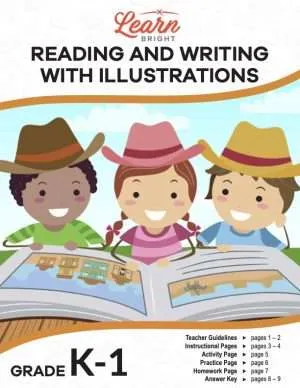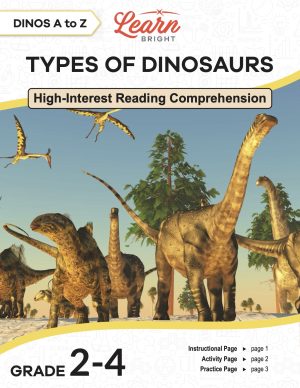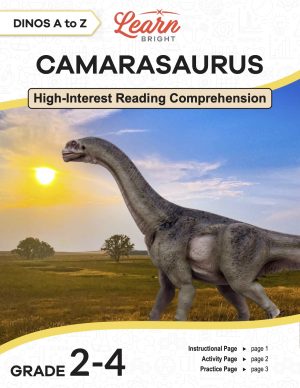Description
What our Introduction to Measuring Lengths lesson plan includes
Lesson Objectives and Overview: Introduction to Measuring Lengths introduces students to how to use standard and metric units of measure to measure length. This interactive lesson engages students with practical applications of determining length. At the end of the lesson, students will be able to order three objects by length and express the length of an object as a whole number by using a smaller object with which to measure. This lesson is for students in 1st grade and 2nd grade.
Classroom Procedure
Every lesson plan provides you with a classroom procedure page that outlines a step-by-step guide to follow. You do not have to follow the guide exactly. The guide helps you organize the lesson and details when to hand out worksheets. It also lists information in the blue box that you might find useful. You will find the lesson objectives, state standards, and number of class sessions the lesson should take to complete in this area. In addition, it describes the supplies you will need as well as what and how you need to prepare beforehand.
Options for Lesson
Included with this lesson is an “Options for Lesson” section that lists a number of suggestions for activities to add to the lesson or substitutions for the ones already in the lesson. One optional addition to this lesson is to have your students use chalk, q-tips, crayons, paperclips, or any other object to measuring various objects in the classroom. You can also create measuring stations where they measure the same object using different objects. Finally, you can have your students draw their own body and cut it out and measure the length of the classroom or the hallways or cafeteria.
Teacher Notes
The teacher notes page includes lines that you can use to add your own notes as you’re preparing for this lesson.
INTRODUCTION TO MEASURING LENGTHS LESSON PLAN CONTENT PAGES
Introduction to Measuring Lengths
The Introduction to Measuring Lengths lesson plan includes three content pages. It’s very important to be able to measure things. Maybe you want to figure out which of two objects is shorter and which is longer. But how can you tell which is longer? You could line them up and see which one ends first. That one is shorter!
You can also use tools to help you measure. For example, the lesson shows four elephant trunks lined up next to numbers (like a ruler!). You can use these numbers to figure out how long each trunk is and which trunks are shorter or longer than the others.
You can compare the lengths of two or more objects using anything, as long as you’re consistent! If you use the same object to measure two things, you can figure out which is bigger. However, you need to make sure that there are no gaps between the objects and that the objects don’t overlap, as this can give you an inaccurate measurement.
Examples
The lesson shows an example using a dog measured with bones. The length of the dog in the lesson is 6 bones long! We can use the same object (a bone, as long as it’s the same bone!) to measure other objects as well. The lesson shows a dog bowl that is 3 bones long and the dog’s collar, which is 4 bones long. We can then compare the lengths of the dog, its bowl, and its collar. The dog is longer than the dish; the dish is shorter than the dog. The dog is longer than the collar; the collar is shorter than the dog.
The lesson closes with three fish—a black fish, an orange fish, and a blue fish. When you look at them, or use an object to measure them, you can see that the black fish is longer than the orange fish and the orange fish is longer than the blue fish.
It’s very important to be able to measure objects so you can compare them. This is a skill you’ll use for your whole life!
INTRODUCTION TO MEASURING LENGTHS LESSON PLAN WORKSHEETS
The Introduction to Measuring Lengths lesson plan includes four worksheets: an activity worksheet, a practice worksheet, a homework assignment, and a quiz. You can refer to the guide on the classroom procedure page to determine when to hand out each worksheet.
TAPE ACTIVITY WORKSHEET
For the activity worksheet, students will measure different lengths of tape placed on the ground by their teacher using their steps. They will record their findings in the chart on the worksheet and compare the pieces of tape from shortest to longest. Finally, they will compare their findings with their classmates.
PAPERCLIP PRACTICE WORKSHEET
For the practice worksheet, students will use a paperclip to measure five objects in their desk or backpack and record them in the table on the worksheet. They will also write 1, 2, or 3 in each box on the page to sort objects by length (with 1 being shortest and 3 being longest).
INTRODUCTION TO MEASURING LENGTHS HOMEWORK ASSIGNMENT
The homework assignment first asks students to write 1, 2, or 3 in each box on the page to sort objects by length (with 1 being shortest and 3 being longest). They will then trace their hand on a piece of paper, cut it out, and use it to measure five objects in their house. They will write down each object they measure and its length in hands.
QUIZ
This lesson also includes a quiz that you can use to test students’ understanding of the lesson material. For the quiz, students will write 1, 2, or 3 in each box on the page to sort objects by length (with 1 being shortest and 3 being longest). They will also measure two objects printed on the worksheet using drawings of snowflakes.
Worksheet Answer Keys
This lesson plan includes answer keys for the the practice worksheet, the homework assignment, and the quiz. If you choose to administer the lesson pages to your students via PDF, you will need to save a new file that omits these pages. Otherwise, you can simply print out the applicable pages and keep these as reference for yourself when grading assignments.









